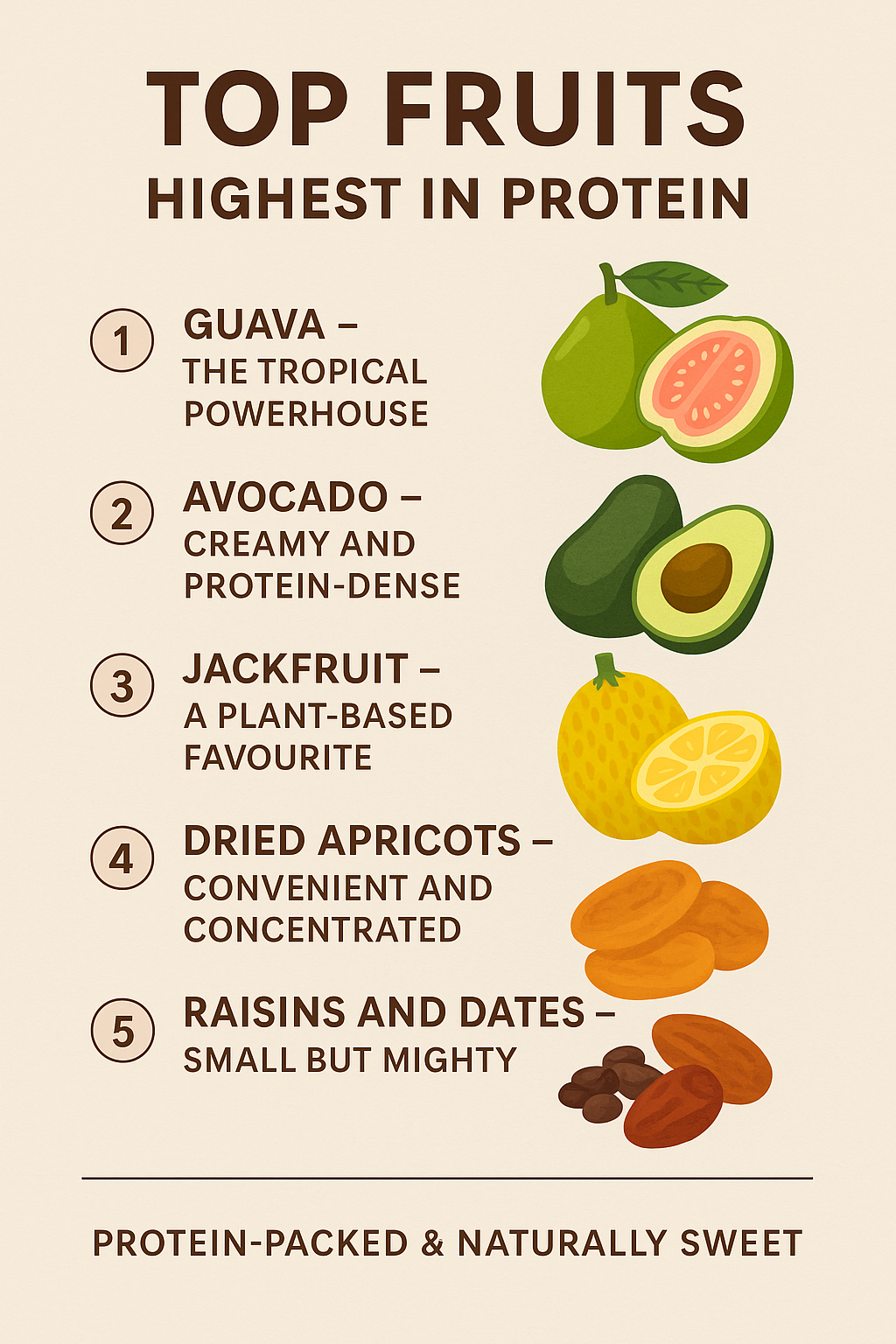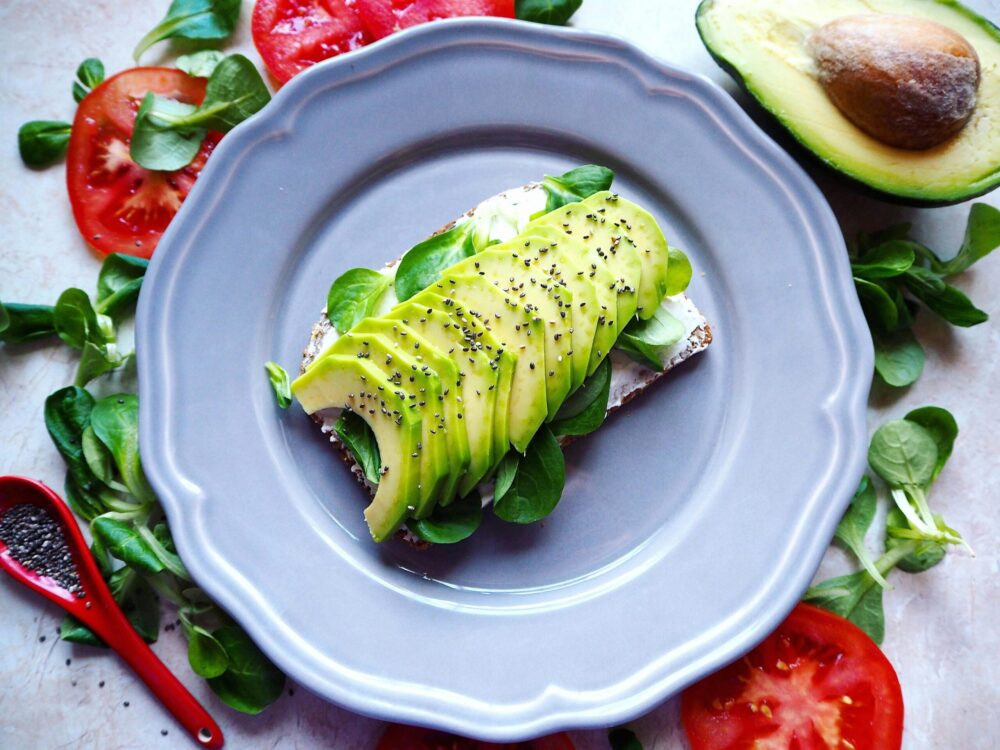
Find out which fruits contain more than 2 grams of protein and how they can support your energy, recovery, and plant-based diet. Learn their pros, cons, and nutrition benefits.
Which Fruits Contain More Than 2 Grams of Protein?
If you’ve ever wondered which fruits contain more than 2 grams of protein, you might be surprised by the answer. While fruits are often praised for their vitamins and antioxidants, some varieties also deliver a valuable boost of plant-based protein. For those following a vegan, vegetarian, or fitness-conscious lifestyle, knowing which fruits offer this extra nutrient can help you plan smarter meals and snacks that support muscle health, energy, and recovery.
Why Look for Protein in Fruits?
Protein is the foundation for strong muscles, healthy tissues, and long-lasting energy. For plant-based eaters, every gram matters. Adding naturally protein-rich fruits to your diet can help fill small gaps and complement main protein sources like legumes, tofu, and grains.
Fruits offer a unique advantage — they deliver protein with hydration, vitamins, fibre, and antioxidants all at once. This means they help your body recover faster, stay energized longer, and maintain a healthier metabolism.
Top Fruits That Contain More Than 2 Grams of Protein
1. Guava – The Tropical Protein Leader
Guava consistently ranks among the highest-protein fruits, providing roughly 4 grams of protein per cup. It’s also rich in vitamin C — even more than oranges — and fibre, which supports digestion and immunity. Add it to smoothies, salads, or enjoy it plain for a refreshing snack that works as both a treat and a recovery booster.
2. Avocado – Creamy and Protein-Packed
Avocado isn’t just a source of healthy fats; it also offers about 3 grams of protein per cup. It’s loaded with potassium, which supports muscle contractions and prevents cramps. Spread avocado on toast, mix it into a smoothie, or slice it over salads for a creamy, nutrient-rich addition to your meals.
3. Jackfruit – A Plant-Based Favourite
Jackfruit delivers roughly 2.5 grams of protein per cup, making it a popular choice among vegans seeking meat alternatives. Its texture resembles pulled pork, and it absorbs flavour easily, making it perfect for savoury recipes like tacos or stir-fries. Alongside protein, jackfruit provides fibre and vitamin B6 for sustained energy.
4. Dried Apricots – Small but Mighty
When fruit is dried, its nutrients become more concentrated. Dried apricots provide around 2 grams of protein per half cup, along with iron and potassium, both essential for energy and muscle function. They’re an easy, portable snack for busy days or pre-workout fuel.
5. Raisins – Naturally Sweet with a Protein Edge
Raisins contain roughly 3 grams of protein per 100 grams, offering a quick source of energy and trace minerals. Paired with nuts or seeds, they make a powerful on-the-go snack that combines natural sugars with plant-based protein for sustained stamina.
Pros of Eating Fruits with Higher Protein Content
- Supports Muscle Recovery: Even moderate protein from fruit aids post-exercise repair and recovery.
- Natural Energy Source: The combination of carbohydrates and protein delivers steady energy without crashes.
- Rich in Antioxidants: These fruits fight inflammation and oxidative stress from intense workouts or daily activity.
- Digestive Benefits: Their high fibre helps regulate digestion and nutrient absorption.
- Hydration and Micronutrients: Many of these fruits contain high water content plus key minerals like potassium and magnesium.
Cons or Limitations
- Low Overall Protein: Even fruits with more than 2 grams of protein are lower compared to beans or tofu, so they should complement—not replace—main protein sources.
- Natural Sugar Content: Some of these fruits, especially dried ones, contain higher sugar levels. Moderation is important for maintaining balanced nutrition.
- Calorie Density in Dried Fruits: The dehydration process makes dried fruits calorie-dense, so portion control is key for those watching their intake.
How to Incorporate High-Protein Fruits into Your Diet
- Blend it up: Add guava, avocado, or jackfruit into smoothies for a balanced post-workout drink.
- Smart snacking: Keep dried apricots or raisins handy for a quick protein-rich bite between meals.
- Combine for balance: Mix high-protein fruits with nuts, seeds, or oats for complete amino acid profiles.
- Creative meals: Use jackfruit as a meat alternative or top salads with avocado for extra protein and creaminess.
Knowing which fruits contain more than 2 grams of protein helps you build a more complete plant-based diet without sacrificing taste or variety. Fruits like guava, avocado, jackfruit, and dried apricots deliver more than just sweetness—they bring a meaningful amount of protein along with essential vitamins, minerals, and fibre.
While they shouldn’t replace major protein sources, including them regularly can enhance your energy, muscle health, and overall wellness. With the right mix of fruits and other plant-based foods, you can enjoy natural flavour and nutritional power in every bite.
